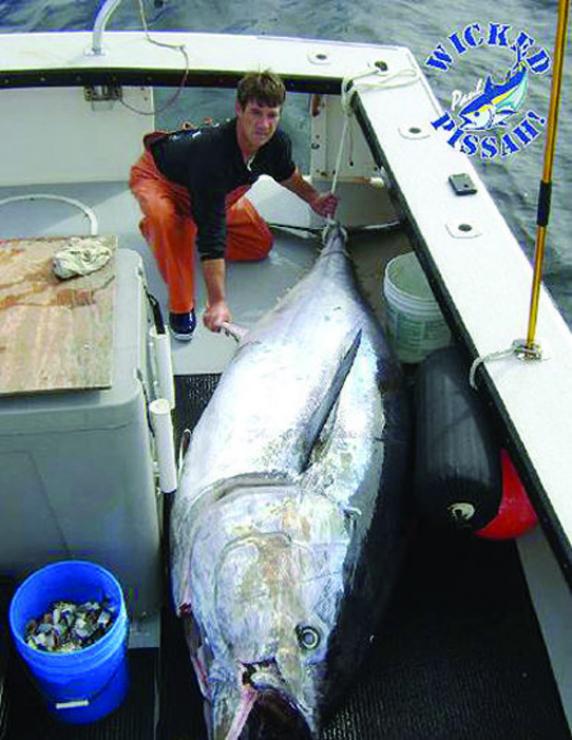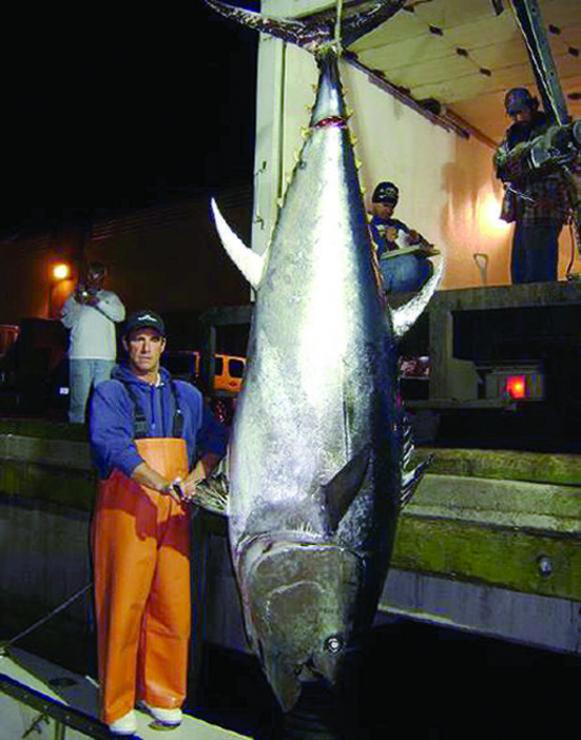Paul Hebert is just like you and me: he caught his first fish when he was eight years old, playing around in his dad’s rowboat. The only difference is that Hebert’s fish weighed 1287 pounds. Paul Hebert’s fishing is now profiled on the popular National Geographic television show Wicked Tuna. He and his crew aboard the Gloucester, MA-based Wicked Pissah head out into the North Atlantic each week, hunting big game. And often the payouts are extraordinary.

“This year, I caught a fish that returned the highest money in 20 years,” Hebert says. “It was the highest priced fish in Japan in 2015, and sold for over $65 a pound. That translated to $47 a pound coming back to the boat. It was crazy. The whole world was talking about Paulie’s fish.”
While a 1300-pound tuna may be impossible for a Bay angler to comprehend, it’s not the largest fish Hebert’s caught by a long shot. “The biggest one I ever caught was a Mako shark. That was in 1997, and I was out lobstering and my brother was out harpooning. He called and said, ‘Where are you?’ And I said, ‘I’m in the Bay pulling our traps.’ He had me come four miles out, and there was this shark in a school of tuna.”
The mako was hooked by handline and gutted before it was brought onboard because the hoisting gear couldn’t lift it. Back at the dock, the fish measured 19 feet, seven inches, and 1530 pounds gutted.
Hebert comes from a family of fishermen. His mother and father ran lobster and fishing boats, and his five older brothers as well. At first, Hebert tried to be both a fisherman and a carpenter (“Like Jesus,” he says with a chuckle). But a fall down an elevator shaft broke both his legs, and made heading out to the North Atlantic for days at a time seem like a more reasonable, less dangerous way to earn a living.

These days, Hebert and his crew bring in roughly 30 fish a year. But that means a lot of time at sea. “I have to go out for three, four days at a time sometimes,” he says. To make this a safer, more comfortable operation, he bought a boat and stripped it down to customize it to his needs. “I bought it and gutted the whole thing to a shell,” he says. “There wasn’t even a wire in the boat. I tore it apart over four months, and redesigned the layout. This boat isn’t a dragger, or a lobsterboat. This is a liveaboard tuna boat. It has a cabin, a shower. I lost a little bit of deck space, but it’s comfortable.”
The boat also has a huge vat cooler capable of storing massive amounts of tuna onboard for multiple days. “The tuna burn up the ice,” he says. “We use the top of the cooler as a cutting table, then slide the fish into these huge tuna bags that are insulated. They hold the ice really nice.”
At the time of our interview, Hebert is taking a brief moment to make a cup of coffee from the cabin of his boat. He’s been out to sea for two days with his crew, and is anticipating having to come in ahead of a building storm. “Sometimes the weather keeps you in,” he says. “Doing this for a job is really tough. But it’s all I know. And once you catch one of these giant tunas, you get hooked. We’re all addicts. We’re ruined. It just destroys you.”